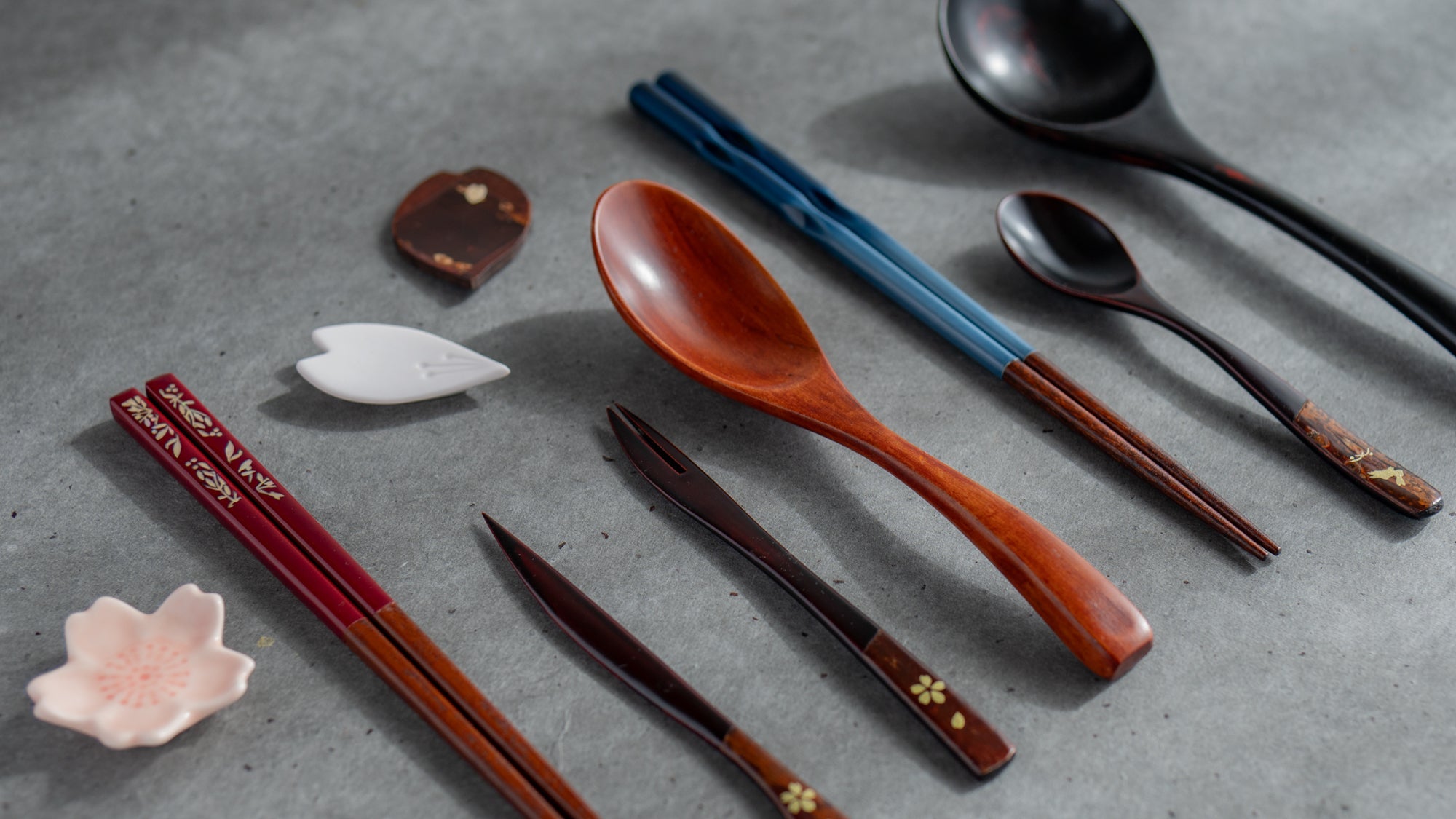
Guide to Japanese Flatware & Cutlery
Written by Team MUSUBI
Utensils are an essential part of every meal, shaping the way we experience and enjoy food. In Japan, chopsticks have long been the primary dining tool, while Japanese forks and spoons are used for dishes that suit their form, such as wagashi sweets, noodles, and rice porridge. Designed to reflect Japan’s distinctive culinary culture and aesthetic, these utensils combine practicality with refined craftsmanship.
This guide introduces the essentials of Japanese flatware and cutlery—from chopsticks and chopstick rests to forks and spoons—highlighting their roles, materials, and the thought behind their design.
table of contents
Japanese Chopsticks
What is Hashi?
In Japanese, chopsticks are called hashi. They are an essential part of the Japanese dining table and have long been cherished as tools that bring balance to the act of eating.
They are also regarded as a symbol of connection—a bridge that links people, reflecting the spirit of togetherness in Japanese dining culture. Choosing a pair suited to your everyday table brings a sense of thoughtfulness and richness to each meal.
Size Guide
The ease of using chopsticks depends largely on their length. For adults, the standard size is around 22 to 24 cm (8.7 to 9.4 in). Choosing the right length for your hand allows for a more comfortable grip and helps you enjoy your meal with natural, graceful movements.
Visit our Chopsticks Collection to discover more tips on finding the right pair for adults and children alike.
How to Use Chopsticks
Holding chopsticks properly allows you to treat food with care and cultivate proper table manners. For those new to using chopsticks, we’ve prepared an easy-to-follow guide. Read through our blog How to Use Chopsticks: Easy Steps for Beginners and enjoy learning the beauty of this everyday practice.
Materials

The material of your chopsticks changes not only how they feel in your hand but also how you experience each meal. Wood offers natural warmth, bamboo feels light and effortless, and glass brings a cool, refreshing touch to the table.
Part of the joy of choosing chopsticks lies in finding the material that feels right for you. Discover more about these materials and their qualities in our blog Enhancing Mealtime: How to Choose the Best Chopsticks.
Chopstick Rest
A chopstick rest is a small yet essential item that keeps the tips of your chopsticks from touching the table or plate. Practical in use and decorative in presence, it brings understated beauty to any table setting.
Benefits of Using a Chopstick Rest
Using a chopstick rest gives the dining table a neat, refined appearance. It prevents the chopstick tips from touching dishware or the table surface, keeping them hygienic and protecting delicate lacquerware or porcelain.
Adding this small piece to your setting conveys care and attention to detail—turning an everyday meal into a moment of genuine hospitality.
Where to Place the Chopstick Rest
In Japanese dining etiquette, chopsticks are placed parallel to the edge of the table. The rest is typically positioned on the left side, with the tips of the chopsticks resting gently on it.
For right-handed guests, place it on the left; for left-handed guests, on the right. When in doubt, placing it on the left side is considered proper.
Japanese Spoons & Forks
Spoons
Spoons have been part of Japanese dining for centuries, evolving alongside chopsticks as both practical tools and expressions of care in the way food is enjoyed.
The earliest ceramic spoons were called renge, meaning “lotus,” for their gentle, petal-like curve. Later, as dining customs diversified, spoons began to appear in many materials such as wood and bamboo, each offering a different feel in the hand.
Ramen Spoons
With their deep, rounded shape, ramen spoons play an important role in Japan’s noodle culture. Typically made of porcelain, the renge-style spoon fits comfortably in the hand, allowing you to enjoy both the broth and the noodles with ease. Some come with a matching rest, making them equally suited for serving appetizers or desserts with a polished finish.
Longer wooden ramen spoons are also a popular choice, matching well with stoneware ramen bowls.
Dessert Spoons
A Japanese dessert spoon brings refinement to any table, whether paired with traditional Japanese sweets or Western-style puddings. Its balanced size makes it ideal for smooth desserts like jellies, certain soft wagashi, or even savory chawanmushi, letting you enjoy each bite comfortably.
Japanese Forks
While forks as we know them today became part of Japanese dining after the Meiji era (1868–1912 CE), Japan already had fork-like utensils designed for handling food with care and precision.
Among them is the traditional dessert fork, a small utensil used when enjoying wagashi. Often made of wood or bamboo, these forks feel gentle on the lips and suit the soft textures of confections like yokan or nerikiri.
Metal forks, by contrast, have a pleasant weight and crisp edge, making them well suited for fruits and other firmer foods.
In Japanese confectionery, the term kashikiri refers to dessert knives, used to cut and enjoy sweets gracefully. Each piece reflects the same attention to beauty and detail found throughout Japanese dining culture.
Japanese cutlery carries a long history and quiet beauty. Its balanced design and practicality bring calm to the dining table. Enjoy the warmth of wood, the texture of porcelain, and the sheen of lacquer—each reflecting the spirit of Japanese craftsmanship.














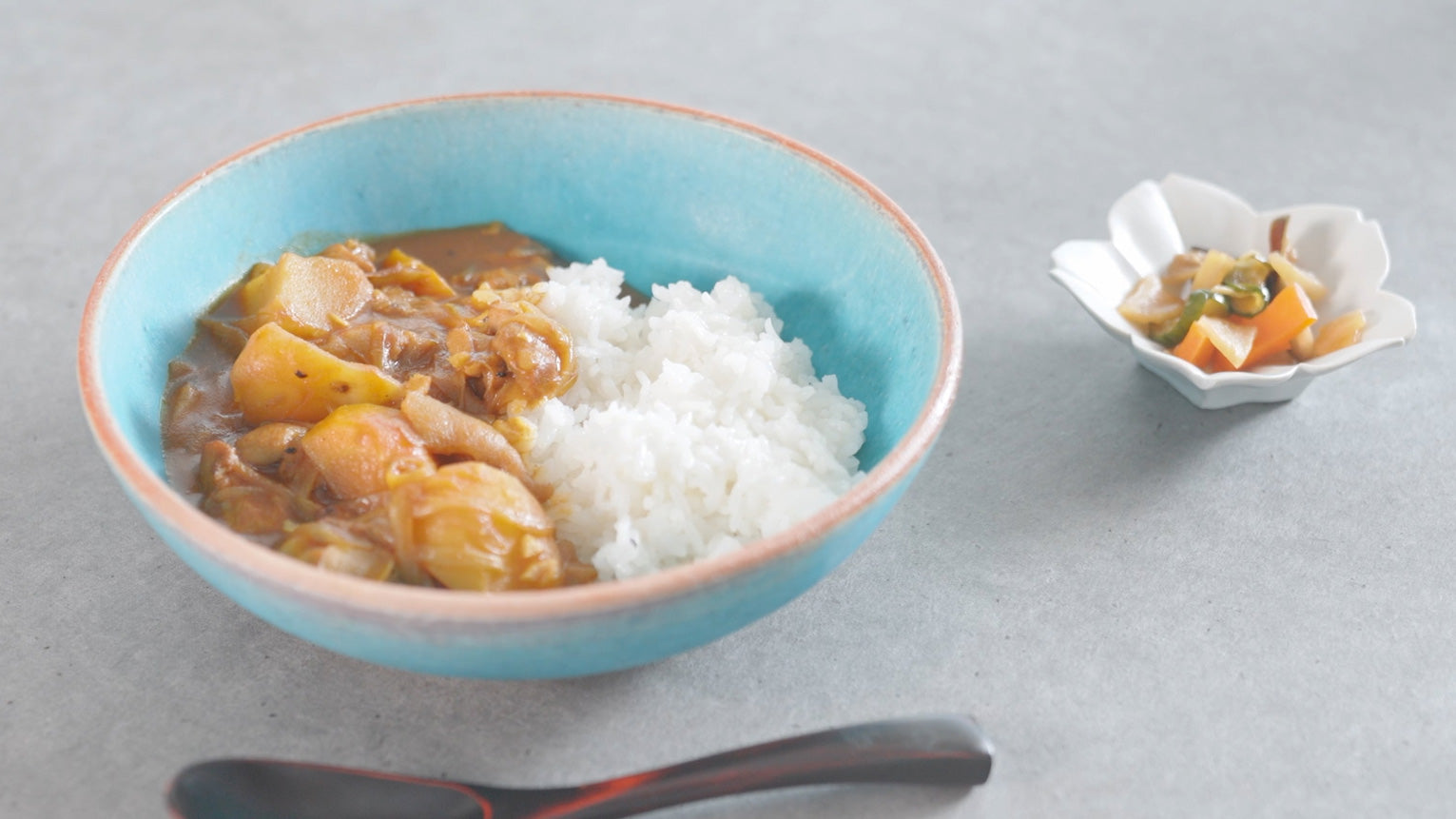
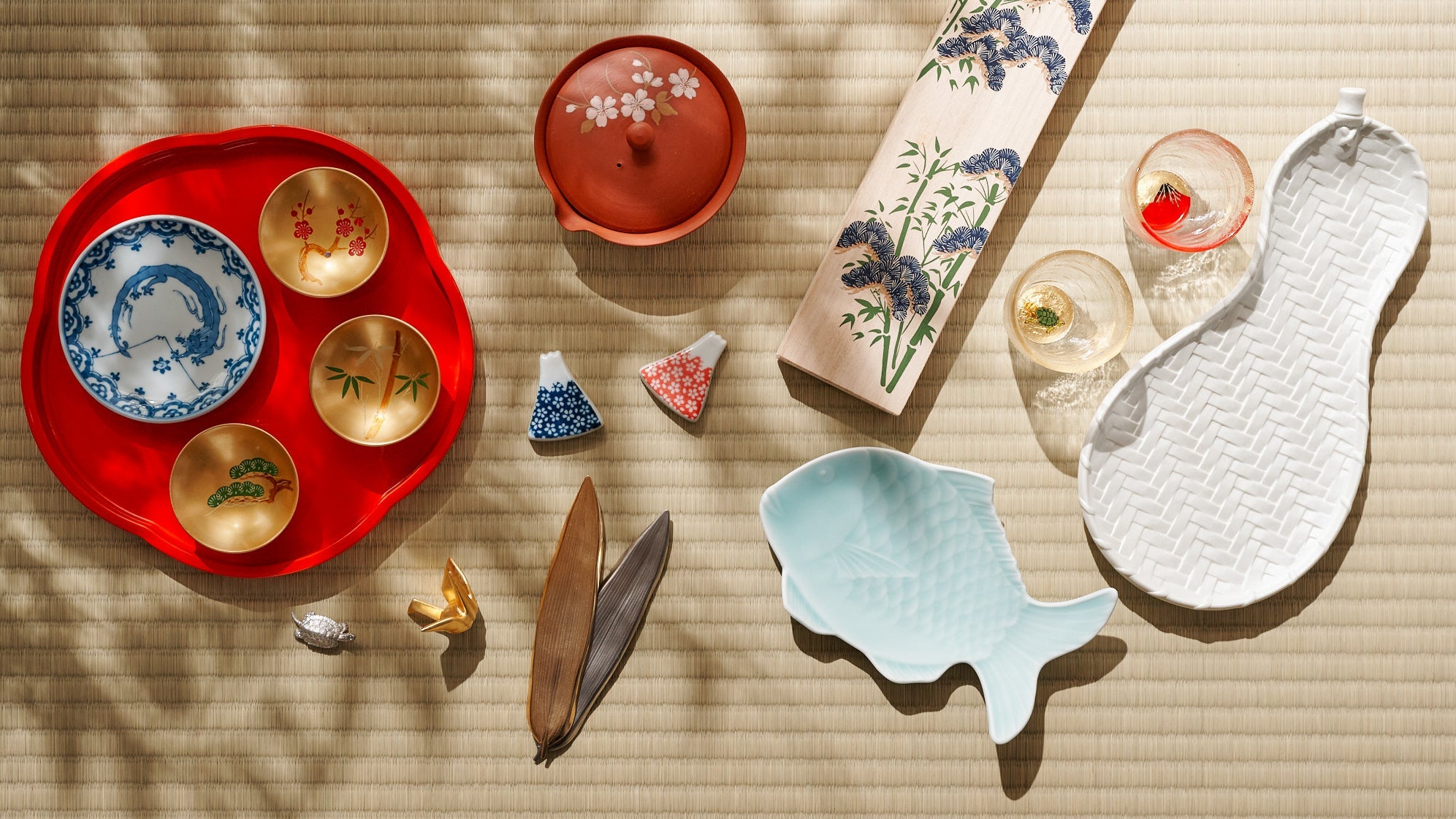

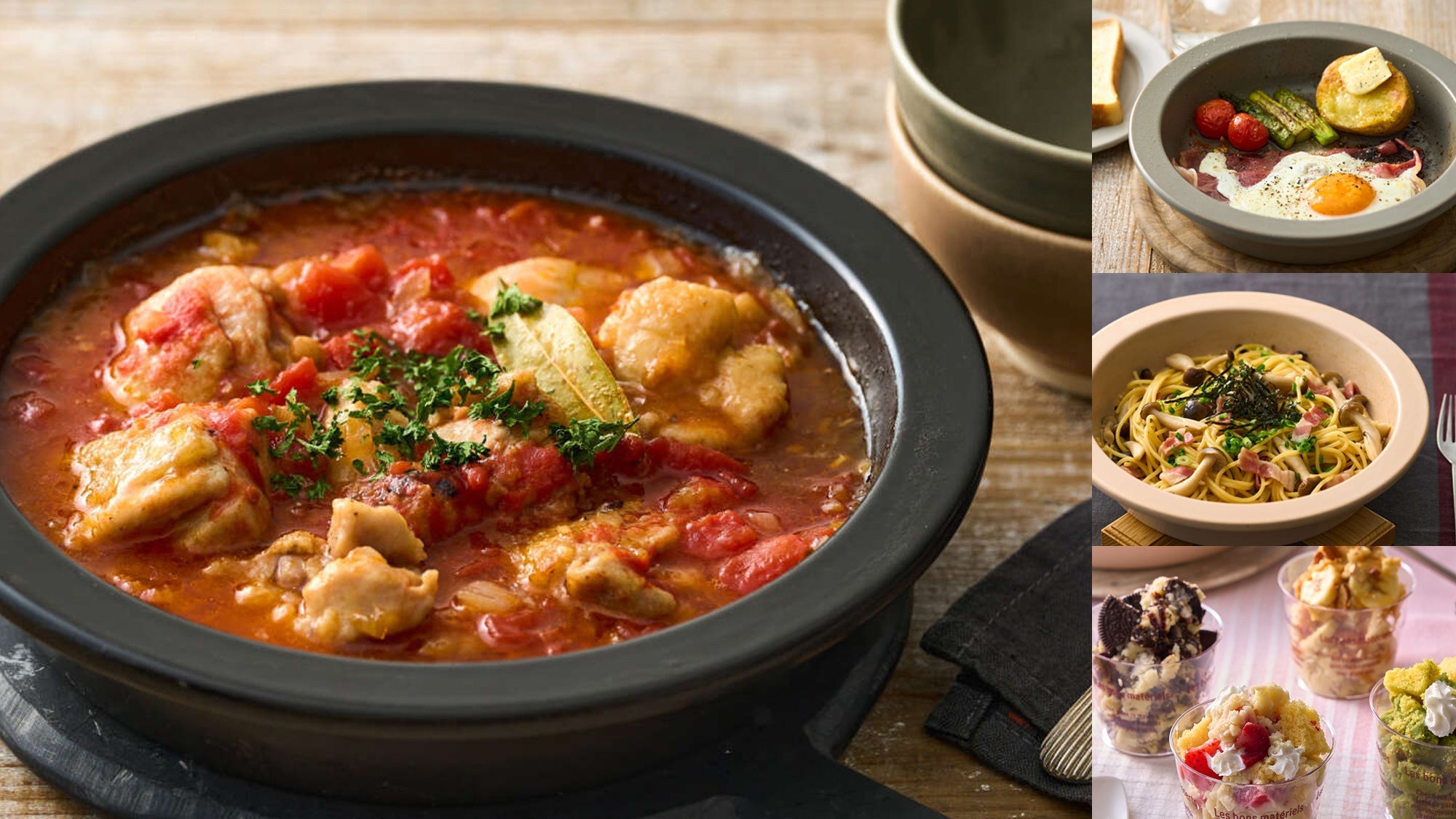
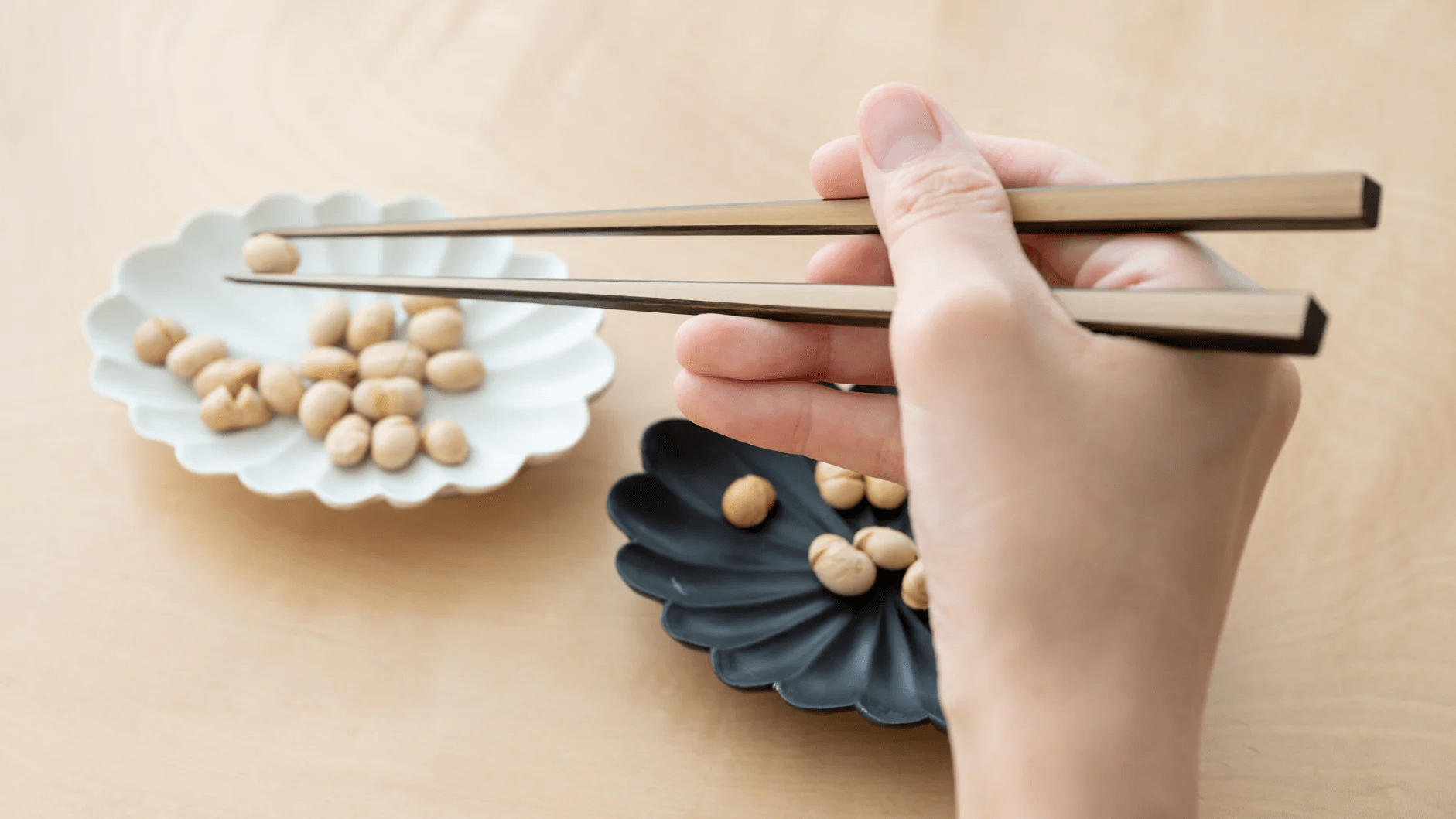
Leave a comment
This site is protected by hCaptcha and the hCaptcha Privacy Policy and Terms of Service apply.